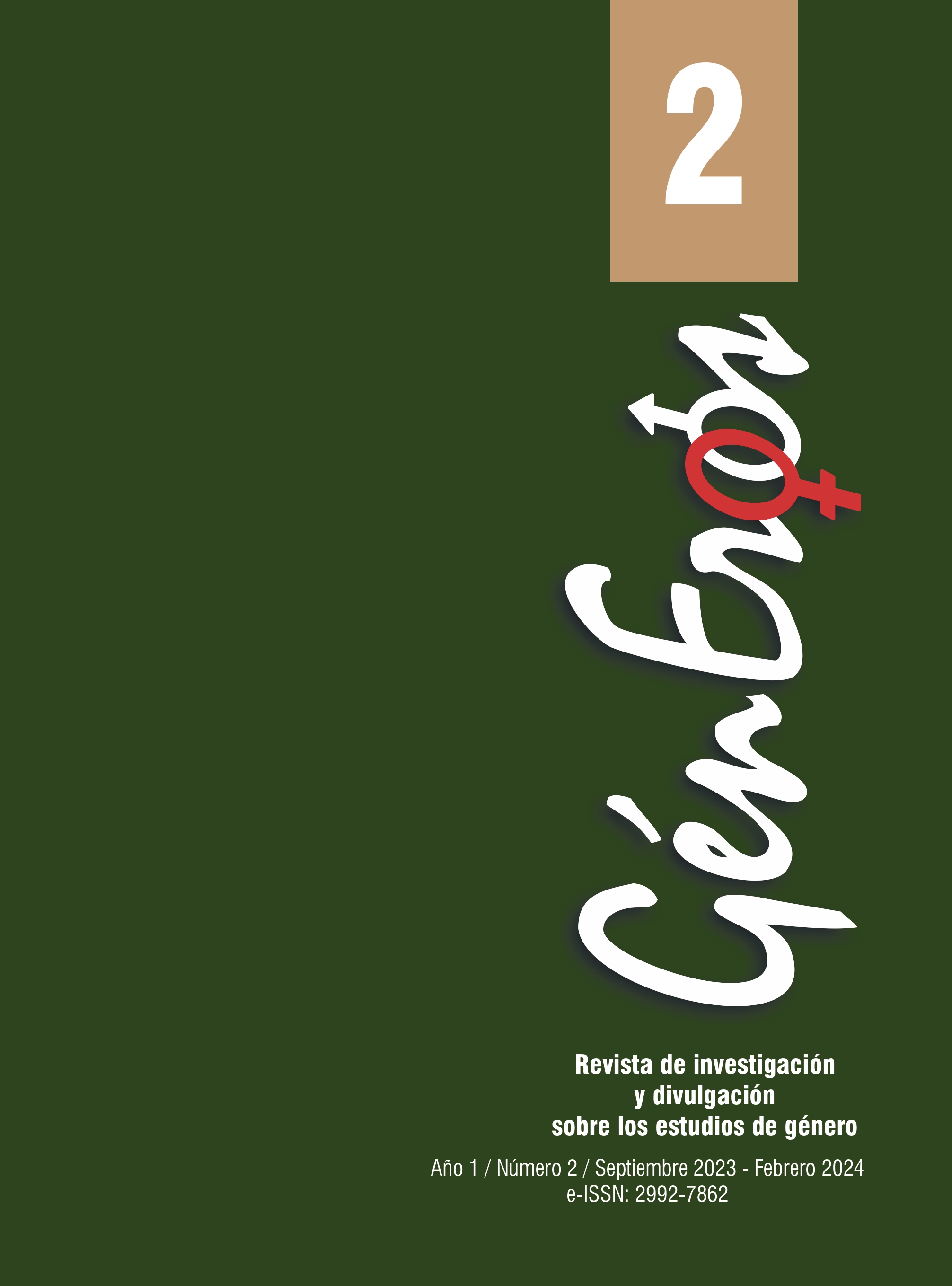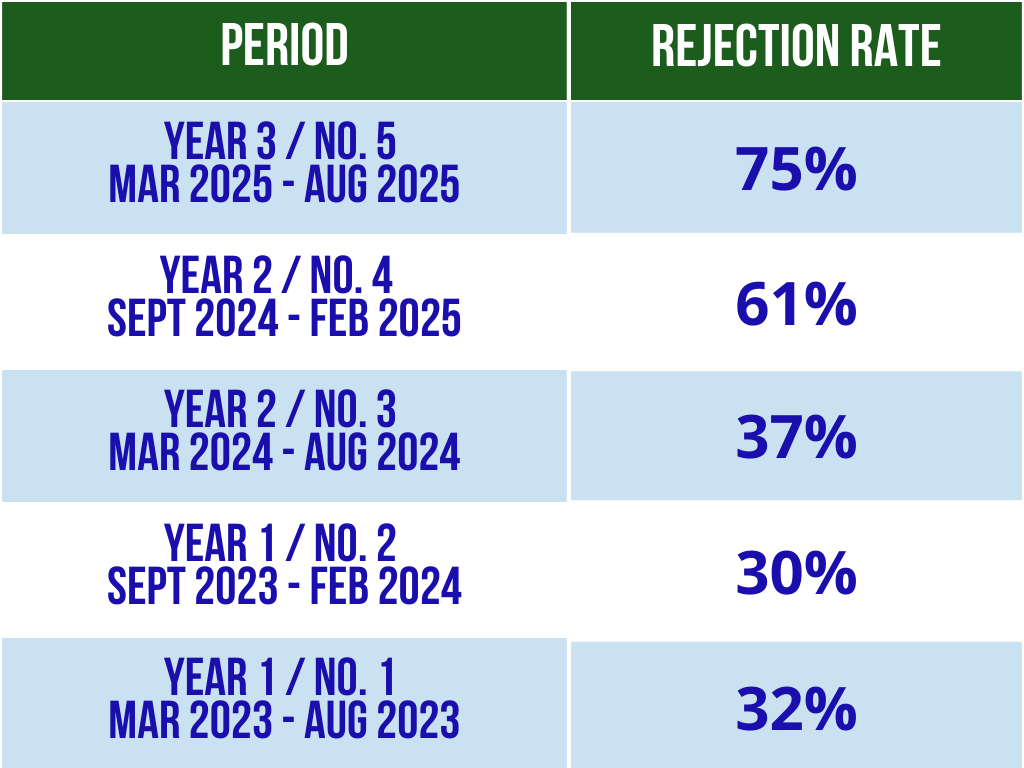Grooming and Sexual Burning: Sexual Assaults on State of Mexico Students During 2020-2021 Confinement
DOI:
https://doi.org/10.53897/RevGenEr.2023.02.01Keywords:
ICT, Cyberviolence, Sexual harassment, Violence, GenderAbstract
The global incidence of 21 virtual aggressions is exposed, as well as the experience with sexual cyberviolence suffered, perpetrated, and observed, during the 2020-2021 confinement. Through the application of a Google Forms questionnaire in addition to virtualized ethnography in a sample of 6,915 students in the State of Mexico. The
result is a global incidence of 20% of the students that were involved in cyber sexual violence. During lockdown, women and non-binary people received more cybervictimization than their male counterparts. The most frequent were sexual proposals and reception of obscene content. The girls were harassed by various sexual predators.
Downloads
Metrics
References
Anders, G. (2001). Nosotros los hijos de Eichmann. Paidós.
Ardévol, E, Beltrán, M., Callen, B. y Pérez, C. (2003). “Etnografía virtualizada: la observación participante y la entrevista semiestructurada en línea.” Athenea Digital, (3). 1-21. https://atheneadigital.net/article/view/n3-ardevo-bertran-callen-etal.
Ardévol, E. (2016). Big Data y descripción densa. Virtuales. Vol.7 (14). 14-37.
Badinter, É. (2003). Hombres /mujeres. FCE.
Bauman, Z. (2011). 44 cartas. Paidós.
Benjamin, W. (2010). Experiencia y pobreza. Obras completas, Libro II Volumen 1. Abada Ediciones.
Calas (2022). La antropología de Rita Segato en la FIL para comprender la violencia de género en Latinoamérica. Mesa de diálogo. FIL Guadalajara, México. https://www.zonadocs.mx/2021/12/03/la-antropologia-de-rita-segato-en-la-fil-para-comprender-la-violencia-de-genero-en-latinoamerica-y-mexico/
Connell, R. (2002). “La organización social de la masculinidad”. En: Valdés, T. y Olavarría, J. (Ed.). Masculinidad/es: poder y crisis. Ediciones de las Mujeres. 31-48.
Curran, J. (2013). “Big Data or ‘Big Ethnographic Data’? Positioning Big Data within the ethnographic space”. Ethnographic Praxis in Industry Conference Proceedings, 62-73. https://doi.org/10.1111/j.1559-8918.2013.00006.x
Floridi, L. (ed.). (2015). The Onlife Manifesto. Being Human in a Hyperconnected Era., Cham Springer Cham Heidelberg New York Dordrecht London. https://link.springer.com/content/pdf/10.1007/978-3-319-04093-6.pdf https://www.academia.edu/9742506/The_Onlife_Manifesto_Being_Human_in_a_Hyperconnected_Era
Geertz, C. (1994). Conocimiento local. Paidós.
Gil-Llario, M. D., Gil-Julia, B., Morell, V., Cárdenas, G., Ballester, R. (2021). Analysis of demographic, psychological and cultural aspects associated with the practice of sexting in Mexican and Spanish adolescents. International Journal of Intercultural Relations, 82, 197-206. https://doi.org/10.1016/j.ijintrel.2021.03.013.
Gutiérrez, I. M. (2014). Cyberbullying y sexting: percepción y propuestas de estudiantes universitarios. Multidisciplina, 17. 93-113.
Gill, R. (2007). Post-feminist Media Culture: Elements of a Sensibilit, European Journal of Cultural Studies. 10 (2). 147-166. https://doi.org/10.1177%2F1367549407075898
Han, B-Ch. (2021). No cosas Quibras del mundo de hoy. Taurus.
Hine, C. (2010). Etnografía virtual. Editorial UOC.
Instituto Nacional de Estadística y Geografía. Encuesta Nacional sobre la Dinámica de las Relaciones en los hogares (ENDIREH (2021). https://www.inegi.org.mx/contenidos/programas/endireh/2021/doc/nacional_resultados.pdf
Instituto Nacional de Estadística y Geografía. (2015). Modulo sobre ciberacoso MOCIBA 2015. Principales resultados. INEGI 2015: DOI: 10.1080 / 17405629.2012.682358
Jones, D. (2010). Sexualidades adolescentes Amor, placer y control en la Argentina contemporánea. CLACSO.
Kaplan, C. y Szapu, E. (2020). Conflictos, violencia y emociones en el ámbito educativo. Nosótrica ediciones/Clacso.
Knobel, M. y Lankshear, C. (2001). Maneras de ver: el análisis de datos en Investigación cualitativa. Cuadernos IMCED.
Illouz, E. (2020). El fin del amor. Una sociología de las relaciones sociales. Katz editores. https://doi.org/10.2307/jj.15478387
Marcus, G. (2001). Etnografía en/del sistema mundo. El surgimiento de la etnografía multilocal. Alteridades, Vol, 11(22). 111-127. UAM Iztapalapa. https://www.redalyc.org/pdf/747/74702209.pdf
Morales-Reynoso, T., Serrano, C. y Santos, A. (2016). Ciberbullying y delitos invisibles. UAEM.
Pérez-Domínguez, E. (2019). Sexualidad y género entre lo online y offline: un estudio con jóvenes de Morelia y Ciudad de México. Tesis de doctorado. El Colegio de México.
Pinto, M. y Ribes, R. (2012). “Sobre encuentros, amistades y caminos en la investigación en ciencias humanas y sociales”. En Corona-Berkin, S y Kaltmeir, O. (2012). El diálogo. Metodologías horizontales en ciencias sociales y culturales. Editorial Gedisa.
Sabsay, L. (2011). Fronteras sexuales Espacio urbano, cuerpos y ciudadanía. Paidós.
Schettini, P. Y Cortazzo, I. (2015). Análisis de datos cualitativos en la investigación social. EDULP. https://sedici.unlp.edu.ar/handle/10915/49017
Segato, R. (2016). La guerra contra las mujeres. Traficantes de sueños.
Segaro, R. (2018). Contra-pedagogías de la crueldad. Prometeo.
Sibilia, P. (2008). La intimidad como espectáculo. FCE.
Velázquez-Reyes, L. M. (2020). Ciberviolencia sexual en preparatorianos. Packs, grooming, sexting, sextorsión, pornografía y propuestas sexuales. Revista isceem, 3a. Época, Año 15, (29). 7-20.
Velázquez-Reyes, L. M. (2021). “Mi celular y yo, una adicción que transita de la felicidad a la distracción” en Ramos-Herrera, A. Redes de cultura escolar en pro de la educación para la paz. Fundación vivir en armonía. 423-440.
Velázquez Reyes, L. M. (2022). En videojuegos: la experiencia de ciberagresiones en el estudiantado mexiquense durante el confinamiento 2020-2021. Transdigital, 3(6), 1–20. https://doi.org/10.56162/transdigital148
Velázquez-Reyes, L. M. y Reyes-Jaimes, G. (2020). Voces de la Ciberviolencia. Voces De La Educación, 5(9), 63-75. Recuperado de: https://www.revista.vocesdelaeducacion.com.mx/index.php/voces/article/view/204
Xantomila, J. (2021, 6 de enero). “Se Agravó en la pandemia el acoso digital contra las mujeres, advierte ONU”, La Jornada, Sección, Sociedad, p. 26.
Published
How to Cite
Issue
Section
License
Copyright (c) 2023 Luz María Velázquez Reyes

This work is licensed under a Creative Commons Attribution-NonCommercial-ShareAlike 4.0 International License.
GénEroos Magazine allows you to share, copy and redistribute the material in any medium or format; adapt, remix, transform and build upon the material, crediting the work appropriately and providing a link to the licence, indicating if changes have been made.








